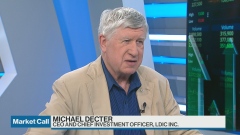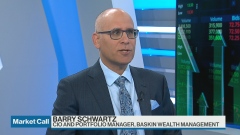Jun 22, 2023
Bond yields climb on hawkish central bank warnings
, Bloomberg News
BNN Bloomberg's closing bell update: June 22, 2023
Bond yields climbed after major central banks warned about the potential for more interest-rate hikes, with officials signaling they’re nowhere near ready to declare victory over inflation.
Treasury two-year yields hit the highest since March as Jerome Powell said the U.S. may need one or two more rate increases in 2023 while the Bank of England cautioned it may have to hike again after delivering a half-point boost. A key section of the German yield curve inverted the most since 1992 on economic concern. Norway’s krone led gains among developed currencies as the nation’s officials pledged more aggressive tightening.
Equities struggled for direction throughout most of the session, with the S&P 500 closing with a mild gain after a three-day slide. A renewed rally in megacaps like Amazon.com Inc., Apple Inc. and Microsoft Corp. fueled the rebound, with the Nasdaq 100 up more than 1 per cent . As stocks gained traction, Wall Street’s favorite volatility gauge, the VIX, slumped below 13 to the lowest level since January 2020.
“We’ve seen central banks say: ‘Oh, we haven’t done enough.’ They thought at the beginning of the year they had, and everybody thought we were going into recession, and now what we’re seeing is the data sequentially move away from that,” said Phillip Colmar, global strategist at MRB Partners. “If you’re not in a recession, it’s also really hard to get core inflation down because you need to weaken the employment sector in order to do so.”
To Kristina Hooper, chief global market strategist at Invesco, if the Federal Reserve does tighten two more times this year, it risks sending the economy into a “significant recession.”
“I’m sounding like a broken record, but I’ll say it again: There is a lengthy lag between when monetary policy is implemented and when it actually shows up in the real economy data,” Hooper added. “We haven’t seen much of an impact yet because of that lag. That’s why we have to worry so much about overkill.”
U.S. equities are in for a tumultuous second half of the year as the lagging impacts of aggressive monetary tightening by the Fed catch up to the economy, according to JPMorgan Chase & Co.’s Marko Kolanovic.
“In equities, absent pre-emptive Fed easing – vs. Fed dots that imply two more hikes by year-end – we expect a more challenging macro backdrop for stocks in 2H, with softening consumer trends at a time when equities have re-rated sharply,” Kolanovic said Thursday in his mid-year outlook note to clients.
LOW CONVICTION
While U.S. equities stormed into bull territory in June, investors haven’t bought into the rally en masse.
There are already signs of low conviction in the S&P 500’s 14 per cent rally this year, with the index set to end its longest weekly winning streak since 2021. Bank of America Corp.’s latest survey shows a net 25 per cent of global money managers are still underweight U.S. equities, despite a recent improvement in allocation.
Elsewhere, Turkey’s lira slumped as the central bank delivered a significantly smaller interest-rate increase than anticipated, as policymakers embark on what they said will be a gradual transition from an era of ultra-cheap money.
Key events this week:
- Eurozone S&P Global Eurozone Manufacturing PMI, S&P Global Eurozone Services PMI, Friday
- U.S. S&P Global Manufacturing PMI, Friday
- Fed Bank of St. Louis President James Bullard speaks, Friday
Some of the main moves in markets:
Stocks
- The S&P 500 rose 0.4 per cent as of 4 p.m. New York time
- The Nasdaq 100 rose 1.2 per cent
- The Dow Jones Industrial Average was little changed
- The MSCI World index was little changed
Currencies
- The Bloomberg Dollar Spot Index rose 0.3 per cent
- The euro fell 0.3 per cent to US$1.0958
- The British pound fell 0.2 per cent to US$1.2746
- The Japanese yen fell 0.9 per cent to 143.14 per dollar
Cryptocurrencies
- Bitcoin rose 0.8 per cent to US$30,237.44
- Ether rose 0.6 per cent to US$1,890.65
Bonds
- The yield on 10-year Treasuries advanced eight basis points to 3.79 per cent
- Germany’s 10-year yield advanced six basis points to 2.49 per cent
- Britain’s 10-year yield declined four basis points to 4.37 per cent
Commodities
- West Texas Intermediate crude fell 4.3 per cent to US$69.39 a barrel
- Gold futures fell 1 per cent to US$1,924.60 an ounce





